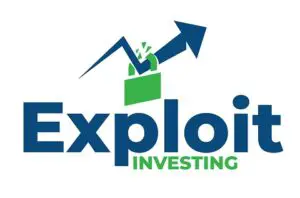
I love value investing. It’s akin to a treasure hunt, and can be extremely rewarding. But, its important to invest with purpose and to know what to look for when buying a stock.
There are two types of value investing, the one I mainly use is balance sheet investing. Although you can also invest using the very popular discounted cash flow, but its a bit more difficult for newer investors.
Studies have shown that specific indicators and catalysts will improve your investing results. So researching a stock is an extremely important and fruitful endeavor. There are potentially an endless number of factors to observe when buying a stock however, below are 10 Factors I consider important when investing in a value stock.
Price to Book Value
Price to book value is my number one go to ratio when I first look at a stock. It is extremely important when you are buying value stocks as a balance sheet investor. It’s also pretty simple to find the price to book value ratio on any stock reporting website.
Price to book value differs from tangible price to book value and its important to make that distinction. I will often trust a tangible price to book value more than the standard one. The reason being many companies will inflate their book value with intangibles and goodwill. Two worthless metrics when valuing a company if you ask me, although in some cases beneficial.
Debt-to-Equity Ratio
Debt-to-equity is an important gauge of a company’s financial health. It will impact profits and can lead to bankruptcy. This is how many companies end up going to zero. But, if a company does not have massive debt it will take a while to get to such a dangerous situation.
It’s important to find companies with lower debt levels, but debt used correctly is not harmful. If a company keeps it’s debt levels below 50% debt-to-equity and remains profitable then it is effectively using its debt. Some other ways to gauge its debt efficiency are to look at its return on invested capital (ROIC) and return on equity (ROE).
You will need to make sure that you are look at all variables related to the company, since if a company is hoarding a boatload of cash it could weigh down on its returns and even with a high debt-to-equity it will still be safe.
Share Buybacks Catalysts
Share buybacks are an extremely beneficial catalyst when it comes to value stocks. A company trading below book value can repurchase its shares and actually increase the value of its remaining shares. This has the added benefit of pushing up PE ratios and even making dividend payments less expensive to pay out.
One demonstration on the power of share buybacks is explained in Warren Buffett’s 2021 letter to shareholders. In it he explains:
Berkshire’s investment in Apple vividly illustrates the power of repurchases…The math of repurchases grinds away slowly, but can be powerful over time. The process offers a simple way for investors to own an ever-expanding portion of exceptional businesses.
Berkshire letter to shareholders
Now, of course Buffett is explaining that share repurchases are great for exceptional businesses. But, they are also great when buying companies that are undervalued. Since in those cases the companies are buying dollars for dimes, nickels, and quarters less than they are presently worth.
Price to Earnings Ratio
Price to earnings (PE) and company earnings results almost go hand in hand. With one main difference. The PE ratio is a measure of price. So if the price to earnings ratio is low, you can be assured you are getting a pretty good deal.
It is important to see how company earnings average out over time. Benjamin Graham explains this in his book The Intelligent Investor. But, it is equally important to note, if a company has negative earnings or positive earnings in a quarter.
By watching the earnings direction closely you can decipher the direction a stock is trending and more easily invest in a safe and profitable business.
Current Assets on the Balance Sheet
The reason I search for stocks below book value are so that I can more easily find stocks trading below net current asset value. Since in order for a stock to be below net current asset value it must first be below book value. Current assets are typically made of of three things:
- Cash and cash equivalents.
- Receivables
- Inventory
There can be other items, such as prepaid expenses but they are typically much smaller than the above three. Of the three, the most important is cash and cash equivalents. This is because inventory in the event of a bankruptcy as Benjamin Graham has noted is worth 60% of its stated value.
Receivables are also precarious as customer may go bankrupt and debts can end up unpaid. So they can not always be counted on. This is why cash is considered king.
You may be able to eek out an edge among other investors if you have intimate knowledge of the type of inventory and the way its valued. Since it can be worth more or less than Benjamin Grahams estimated value.
The Dividend
I love dividends. It helps me maintain trust in a company and it’s exciting to get payouts from an investment. Even if returns are typically lower than non dividend paying companies. But, not all dividends are created equal and its important to find safe dividends when valuing a company.
Payout Ratio
The first place to look when valuing a stock and it’s dividend is its payout ratio. If a company is consistently profitable then its ratio will be below 100%. This is great, but I like my company’s to be growing, and safe. So I would suggest finding company’s with a payout ratio less than 60% and even less if its earnings are not consistent.
Dividend Yield
Dividend yield is a common metric used when looking for value stocks. Dividend yield percentages will be on the higher end if a company has fallen in price. They are typically in the 5% range and tend to be solid value indicators.
However, you will need to pay attention to the payout ratio and other factors to see if it can still support the dividend, since a cut in the dividend will often send the stock in a freefall.
Potential Risks
Not everything is perfect when you are investing in value stocks. This is the reason they are selling at such bargain prices! So there are going to be some noticeable risks. The key is to determine if the price you are paying for the stock is low enough to take on the potential risk.
The risk evaluation aspect when looking at potential stock investments falls into the category of qualitative investing. This is separate from many of the above factors that mainly focus on quantitative investing, or the numbers and ratios aspect of investing.
In order to properly evaluate the risks of a company you will first need to know what these risks are. The best place to look is in the 10-K.
Some common risks include:
- Company cannot sell its products.
- Natural disasters.
- Customers declare bankruptcy.
- Industry has become obsolete.
- Capital equipment experiences failure.
The 10-K will give you the best idea of what risks you are potentially dealing with and it is up to the investor to decipher how probable they are when you consider variables in the real world. It is probably the most difficult and is often considered an art form in investing.
Market Capitalization
This is an important consideration for first time investors. Typically many new investors will buy large consistently profitable companies. It’s the safest and easiest way to invest. The potential returns are not as great though. So I often look to smaller market capitalization stocks in order to find cheap company’s selling at a discount.
Market Capitalization is split into 5 categories
- Mega caps.
- Large caps.
- Mid caps.
- Small caps.
- micro caps.
I will tend to stay in the small and micro cap realm since many large fund professional investors will not be able to buy them. Because they are dealing with such large sums of money impact on their portfolio will be negligible so its not worth the time it takes to research.
Insider Share Purchases
Company insiders, whether it be management or individuals who serve on the board will buy and sell shares in their company. They are required to disclose this information. So using this public information we can decipher what insiders think about how the company will perform in the future.
Since they have a great idea of the industry and the company’s day to day operations their buying or selling of the stock can be a vote of confidence of whether or not they think the stock has potential at its current valuation. Watch insider purchases carefully and use them as a factor when buying a stock.
Company Industry
This is my favorite part in investing and really hits home when it comes to the old mantra “Invest in what you know.” What it really comes down to is research and learning about the company you are about to put money in.
I will take a precursory glance at the description of what the company does and if its interesting enough to me I will invest more time into it. I gauge whether its worthwhile by identifying trends in the real world in specific industries. It’s part of the art in investing and probably the most fun.
If a company is deemed interesting and worthwhile its time to dive into their website. There is a lot of information you can glean from a company website. It really helps to paint a picture of how this company exists in the world and help give you the extra conviction you need to size your portfolio position.
